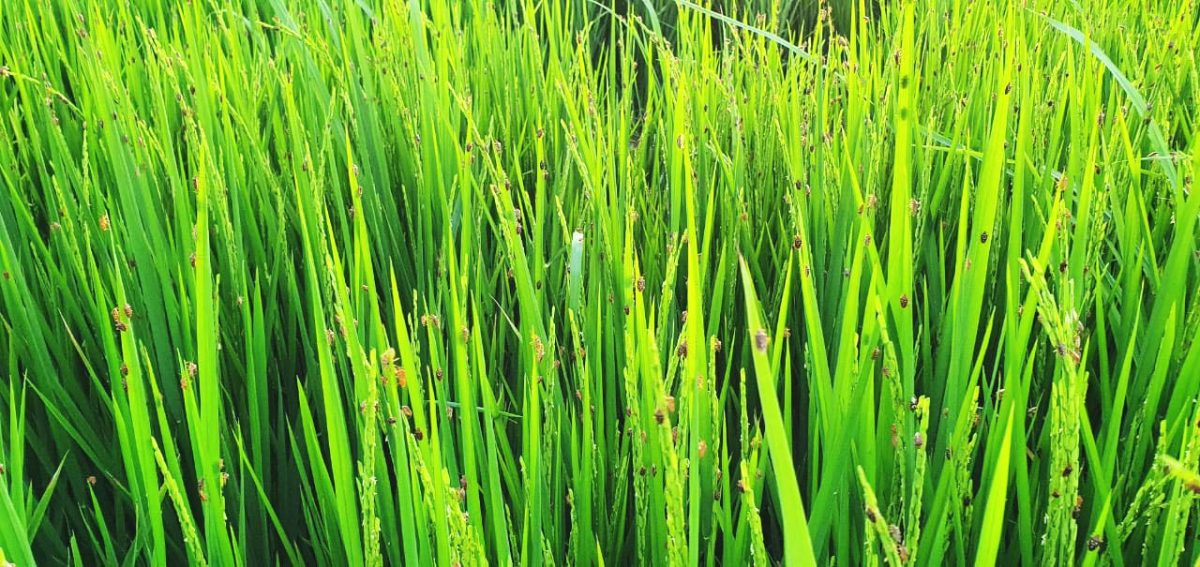Close to 33,000 acres of rice are under threat as Essequibo Coast rice farmers are once again grappling with the invasion of paddy bugs, which they fear could destroy the crop if swift action is not taken to get the infestation under control.
At present, farmers between Anna Regina and Charity and in the Supenaam area have been battling for several weeks despite some assistance from the Guyana Rice Development Board (GRDB). The GRDB has been spraying in communities where there have been reports of the paddy bug manifesting.
In 2019, the GRDB had to intensify its spraying programme to assist in managing the paddy bug infestation.
Rice Producers’ Association (RPA) representative Lionel Boodram explained to this newspaper that the farmers are now very fearful of losing the entire crop if the GRDB does not step in and intensify its spraying campaign.
Boodram explained that based on reports, the bugs originated in the Lima Sands community and efforts should be directed in that area.
Large scale farmer Roopan Ramotar has suggested that the GRDB should engage in aerial spraying to eliminate the bugs. He suggested the option as he explained that spraying by hand has not been effective as only a limited area is covered at a time. “The rice now start to ripe and bugs are by the millions. You spray this afternoon and the next morning you have to spray again. It is getting uncontrollable…” Ramotar, a rice farmer of Land of Plenty said.
According to him, the entire crop can be gone within two days if the infestation is not controlled. “If we can’t [get this under] control at this early stage, we might end up having great losses in the rice industry on the Essequibo Coast. With the amount of bugs here, if you don’t get control over it you will lose everything in the crop. You can lose everything basically in two days,” he lamented.
In August last year, General Manager of the GRDB Nizam Hassan said the GRDB was advising farmers and recommending to them that they should be spraying where they are seeing the bugs. “They have irrigation and drainage canals that [have] vegetation where they saw bugs,” he noted then.
The GRDB had organised teams across the regions comprising of Paddy Bug and Extension Officers and men hired to spray chemicals to kill the pests. The GRDB also provided the chemicals and the hired personnel then went around the regions combating the bugs in 2019
Additionally, this newspaper had reported GRDB Entomologist Viviane Baharally as explaining that the paddy bug had a lot of natural enemies, inclusive of spiders, beetles and other bugs. As a result, Baharally said when farmers do preventative spraying, they kill other insects that often feed on the paddy bug, which then allows the pest to thrive unhindered. “When they move one by one in the fields, those natural enemies can take care of them. When they invade by the millions, that’s when the farmers have to take care of it. The important thing is to know when the invasion occurs so you can kill them before they have a chance to spread,” Baharally had explained.
“When the adults invade, they invade by the millions so it is better to identify the time and place where they invade and knock them out almost immediately,” Baharally further said.
She emphasised that farmers should monitor their fields and surrounding areas in the morning and spray in the afternoon since the bugs attack during the night.
To better manage the bugs, Baharally stressed that uniform block planting is needed and farmers should not encourage alternate hosts of the paddy bugs on or around their fields. They should not do preventative spraying in order to ensure the paddy bug’s predators can thrive,” she had advised.






